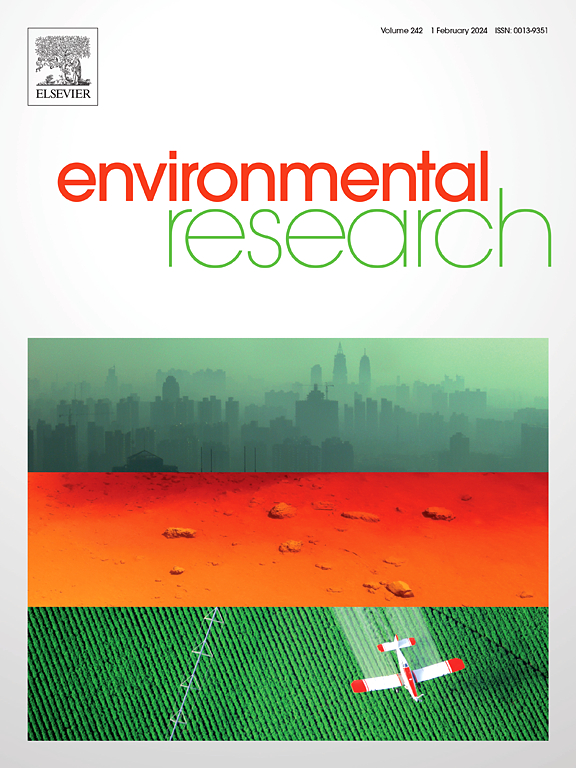Beta-amyloid deposition increases in the brain with the progression of silicosis: a [18F] AV45 PET study in mice
IF 7.7
2区 环境科学与生态学
Q1 ENVIRONMENTAL SCIENCES
引用次数: 0
Abstract
Occupational silicosis caused by long-term inhalation of silica is a serious public-health problem in the world and is known to be a risk factor for the development of dementia. However, the progression of silicosis, including its impact on the brain and its relationship with β-Amyloid (Aβ), the early biomarker of Alzheimer's disease, remains unclear. In this study, we categorized silicosis into four stages in a mouse model and employed [18F] AV45 PET imaging to quantify Aβ deposition across 19 cerebral sub-regions. We compared the differences in Aβ accumulation across various stages of silicosis and observed a significant increase in Aβ deposition in key brain areas such as the cortex and olfactory bulb, correlating with the severity of lung fibrosis. Notably, Aβ accumulation was also detected in the ocular region, indicating its potential as a non-invasive biomarker for cognitive impairment. These findings highlight a direct link between pulmonary health and neurodegeneration, suggesting that occupational exposure may lead to structural brain changes and cognitive decline. The study underscores the importance of managing silicosis to mitigate its neurological impacts, providing insights into the systemic effects of occupational hazards on brain health and emphasizing the need to monitor these risks to prevent cognitive decline.
随着矽肺的进展,大脑中β -淀粉样蛋白沉积增加:一项小鼠AV45 PET研究[18F]
由于长期吸入二氧化硅而引起的职业性矽肺病是世界上一个严重的公共卫生问题,众所周知,它是发展为痴呆症的一个危险因素。然而,矽肺的进展,包括其对大脑的影响及其与β-淀粉样蛋白(阿尔茨海默病的早期生物标志物)的关系仍不清楚。在这项研究中,我们在小鼠模型中将矽肺分为四个阶段,并使用[18F] AV45 PET成像来量化19个大脑亚区中a β的沉积。我们比较了矽肺不同阶段a β积累的差异,并观察到a β沉积在大脑关键区域(如皮层和嗅球)的显著增加,这与肺纤维化的严重程度相关。值得注意的是,在眼区也检测到a β积累,表明其作为认知障碍的非侵入性生物标志物的潜力。这些发现强调了肺部健康和神经退行性变之间的直接联系,表明职业性接触可能导致大脑结构变化和认知能力下降。该研究强调了管理矽肺病以减轻其神经系统影响的重要性,提供了对职业危害对大脑健康的系统性影响的见解,并强调了监测这些风险以防止认知能力下降的必要性。
本文章由计算机程序翻译,如有差异,请以英文原文为准。
求助全文
约1分钟内获得全文
求助全文
来源期刊

Environmental Research
环境科学-公共卫生、环境卫生与职业卫生
CiteScore
12.60
自引率
8.40%
发文量
2480
审稿时长
4.7 months
期刊介绍:
The Environmental Research journal presents a broad range of interdisciplinary research, focused on addressing worldwide environmental concerns and featuring innovative findings. Our publication strives to explore relevant anthropogenic issues across various environmental sectors, showcasing practical applications in real-life settings.
 求助内容:
求助内容: 应助结果提醒方式:
应助结果提醒方式:


